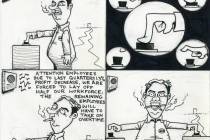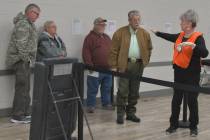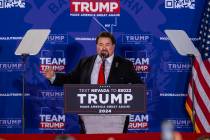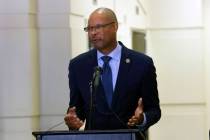The other kind of nuclear waste
In 2002 I was riding by train across the United States from Pennsylvania to Nevada. During one meal in the dining car, I was seated with three other folks. One businessperson was complaining about the subsidies the railroads receive from the government, even as he enjoyed their benefits.
I mentioned that the same thing was true of the airline industry, that it had always received federal subsidies and likely would not even exist if it weren’t for federal help. He objected, denying flat out that the airline industry is subsidized. When I arrived back home, I ran some checks to be sure I knew what I was talking about. I found what I expected – hundreds of millions of dollars in corporate welfare to aviation beginning in the 1920s, not even counting the amounts laid out by both federal and local governments for other costs, such as construction of airports.
Since September 11, of course, it has become more difficult for anyone to deny that the airline industry is propped up by taxpayer dollars. Billions upon billions have been laid out in cash grants, loan guarantees, pension bailouts, state and federal jet fuel tax exemptions, on and on it goes – even “war risk” insurance! The industry is very clever at turning every development, good or bad, into a new reason for subsidies. Here’s an example, from a 2012 Washington Post piece by Ashley Halsey III:
“When the major airlines began charging fees for baggage a few years ago, the rationale they announced was straightforward: Fuel prices had spiked dramatically. Rather than increase ticket prices just as dramatically, airlines would charge for baggage. Since then, they have collected $12.8 billion in fees for something that once was free. That has allowed the major airlines – called the legacy carriers – to keep their ticket prices competitive with low-cost airlines. For taxpayers, however, here is the catch: There’s a 7.5 percent federal tax on every airline ticket. The money goes into a fund that pays for the air-transportation system: airports, capital improvements and the operation of the Federal Aviation Administration. But in nine of the past 11 years, the amount of money flowing into that fund – mostly ticket-tax revenues – has fallen short of projections. When that happens, Congress can increase general-fund contributions to cover the FAA’s budget. In both fiscal 2009 and 2010, Congress appropriated an additional amount of almost $1 billion. When the airlines kept ticket prices down by shifting $12.8 billion to baggage fees, they also saved almost $964 million in federal taxes they would have owed if they had increased ticket prices by that amount.”
Meanwhile, Amtrak takes a constant public relations beating for its relatively small subsidies.
Federal subsidies are a chronic target for conservatives, even as those conservatives promote industries that are absolutely dependent on those subsidies. For instance, congressional Republicans are currently in the business of pushing “100 new nuclear [power] plants in 20 years.” If it happens, of course, it will bring new pressure for building the Nye County dump for high level nuclear wastes at Yucca Mountain. But first things first. Where will the money to build those 100 power plants come from? Look in the mirror. If it weren’t for taxpayers, there wouldn’t be a nuclear power industry. It has always run at a loss.
In 1953, President Eisenhower gave an “Atoms for Peace” speech that set off an era of thinking of atomic energy as “Our friend the atom,” as Disney called it, including a notion of cheap energy. What no one told the nation was that it was all an illusion. As T.A. Frank wrote in the Washington Monthly in 2010, “While we did achieve the air-conditioning of Las Vegas—not to mention a change of temperature in the Arctic—the part about cheap atomic power never really came to pass. Not only did nuclear energy remain stubbornly pricey; the nuclear industry proved spectacularly incompetent. The parade of nuclear power plants built in the United States in the 1970s and ’80s resulted in dozens, even scores, of botched projects and billions of dollars in cost overruns. … The last batch of reactors built on American soil exceeded their initial cost projections by an average of 200 percent.”
So another hundred plants could bankrupt the United States. No new plant has entered service in almost 20 years, and if the nation is to return to nuclear as an energy source, politicians need to level with the public about the cost.
Dennis Myers is an award winning journalist who has reported on Nevada’s capital, government and politics for several decades. He has also served as Nevada’s chief deputy secretary of state.
















